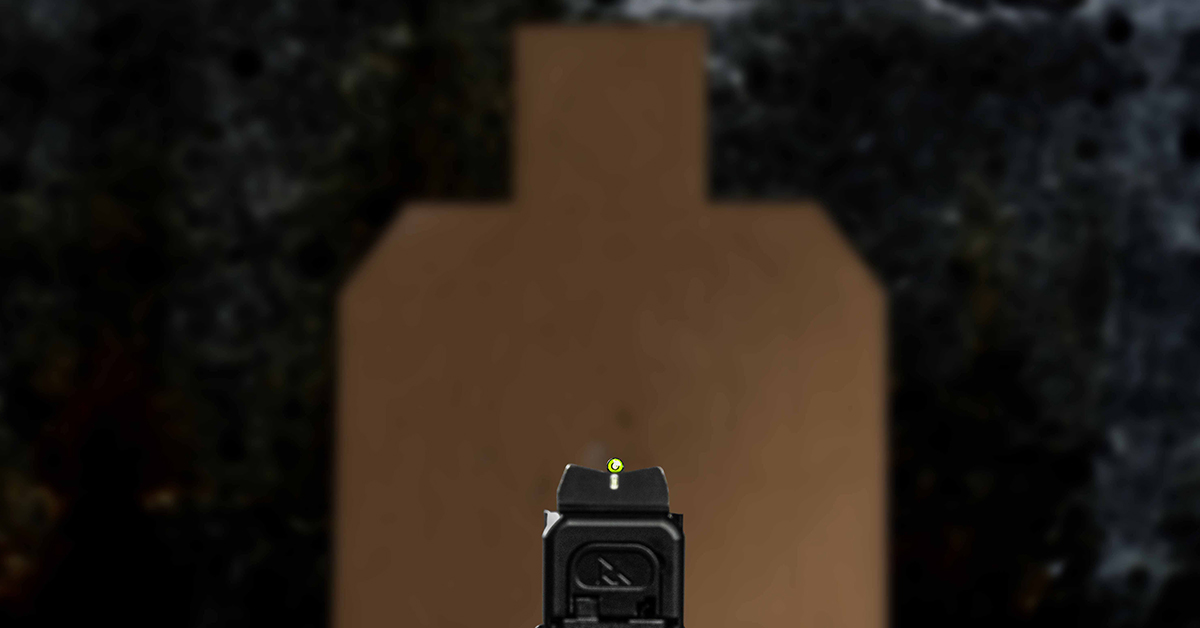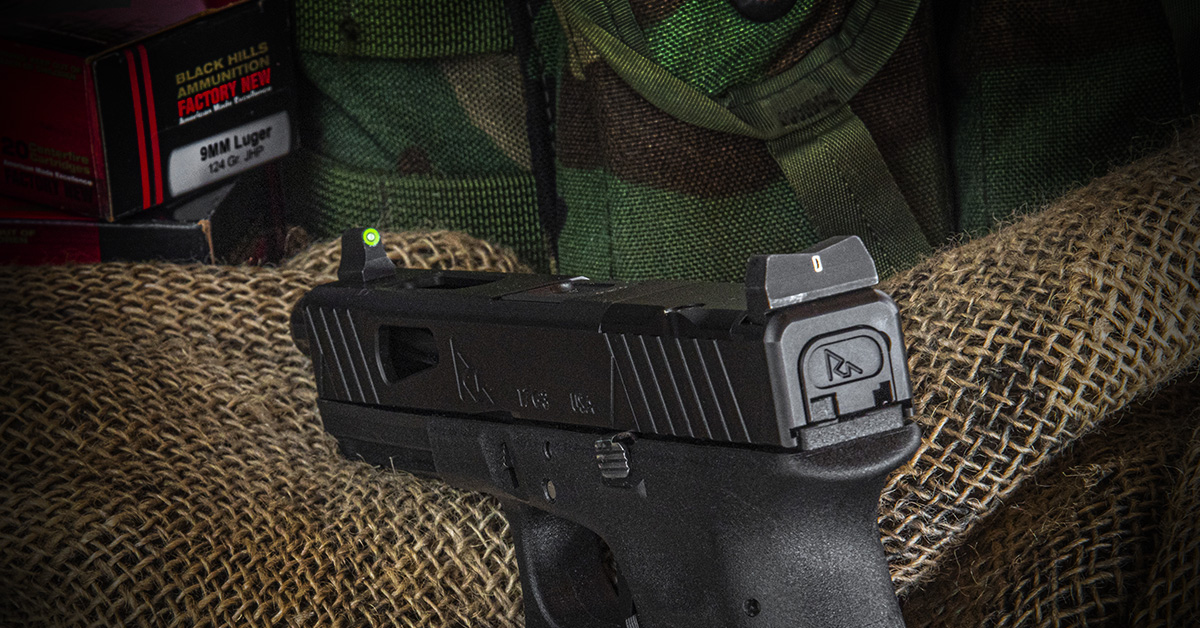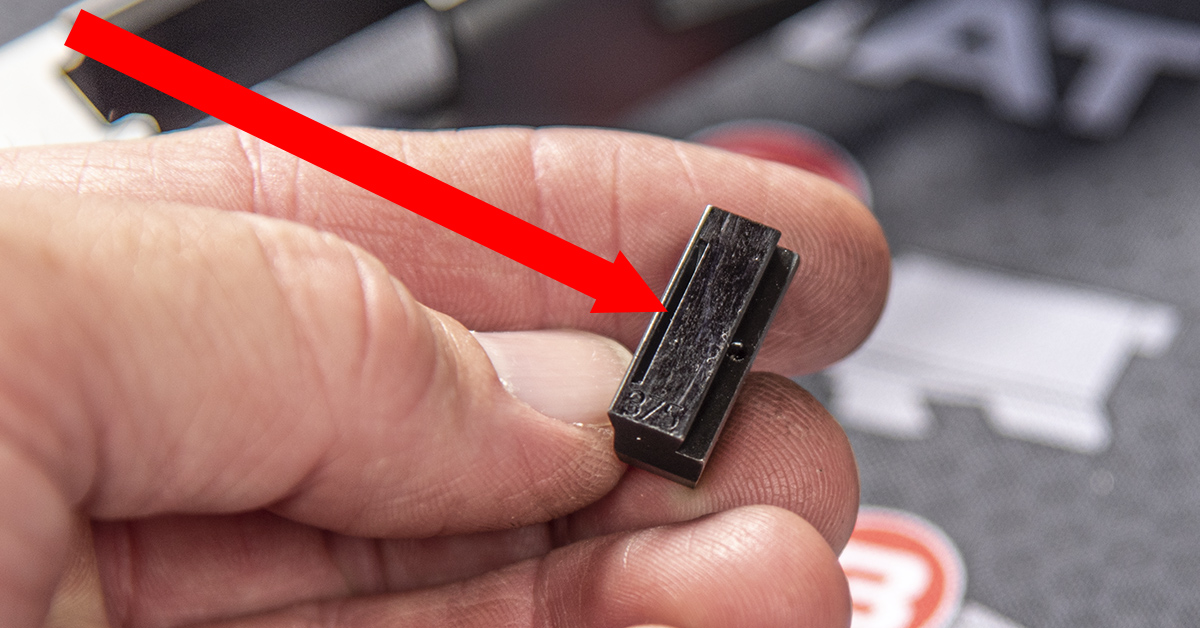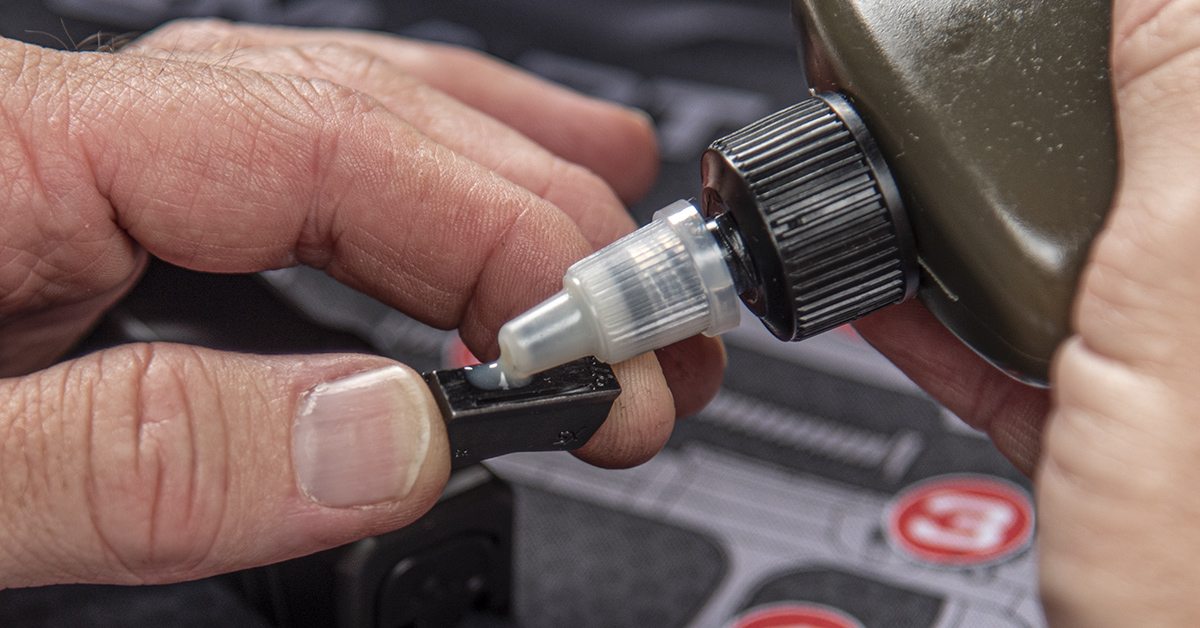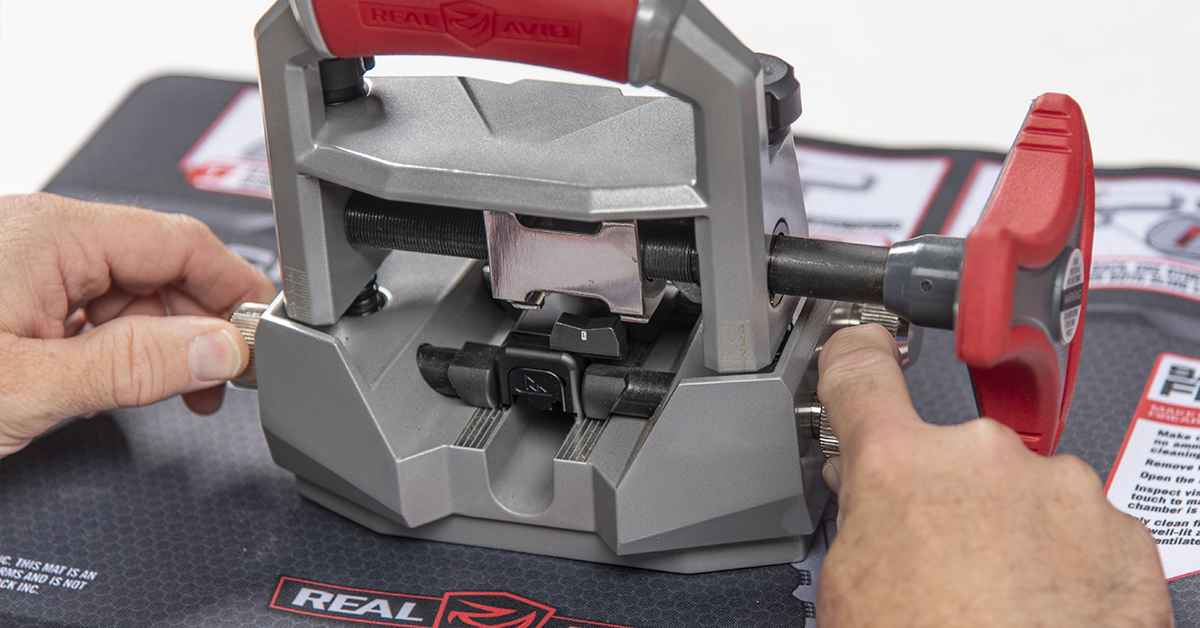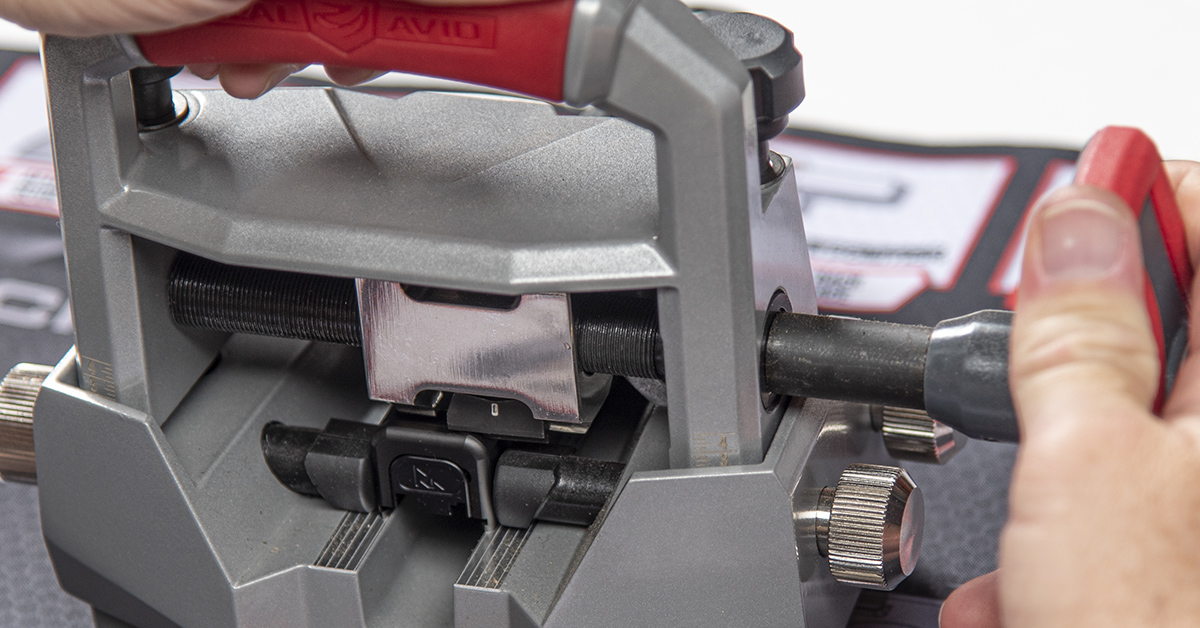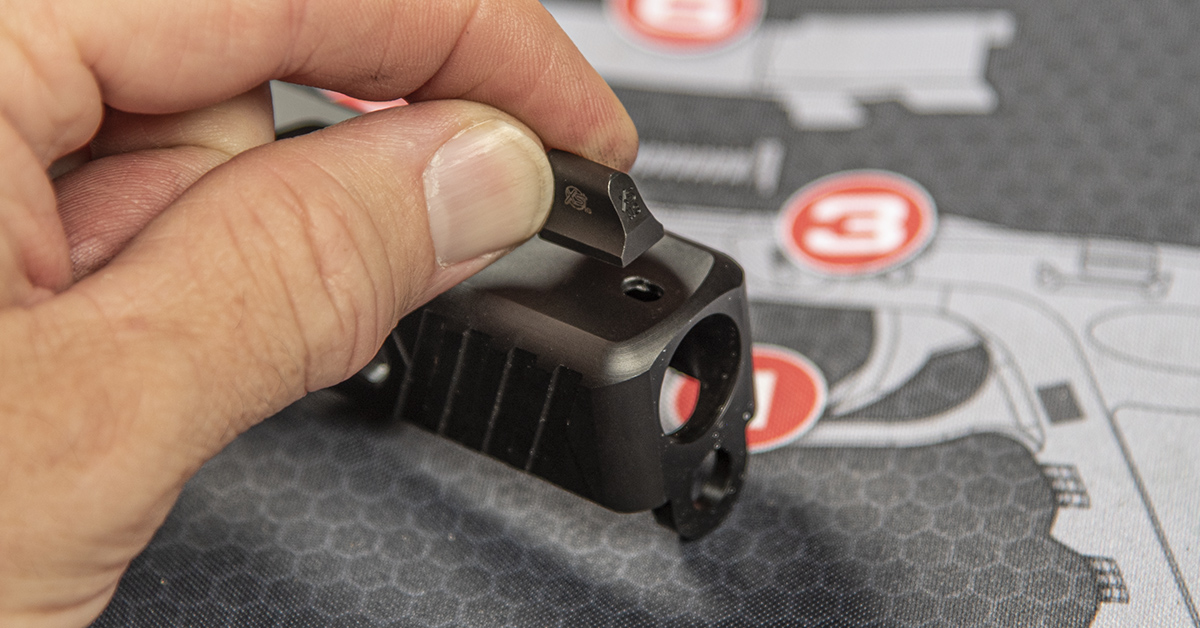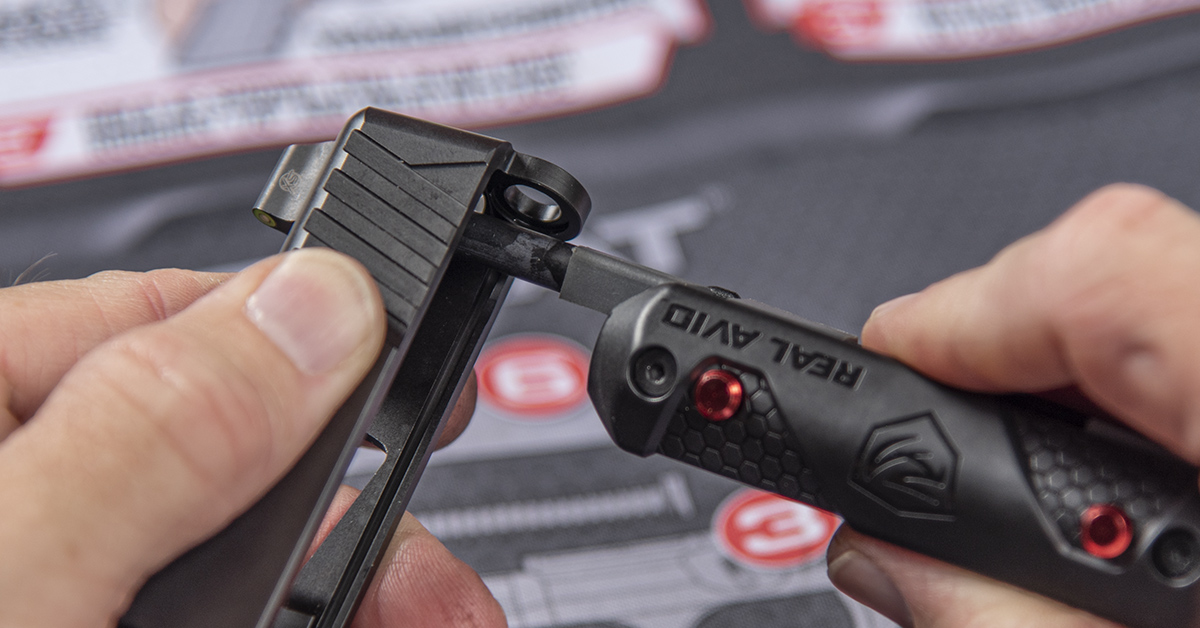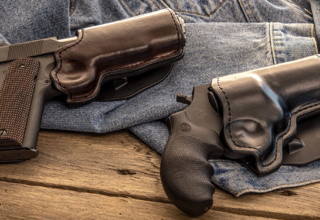This proven pistol sight design is quickly gaining popularity among the CCW/EDC crowd. Here’s why…
by Rob Reaser
When a torqued-off water buffalo or a rank cheetah is barreling down on you in a hell-spawned ball of fury, achieving a perfect notch-and-post sight alignment is probably not going to happen. Dangerous African game hunters from way back when up to today have understood that any time the action is close, lightning fast to unfold, and life is literally in the balance, practicality and efficiency usually trump form.
For many Dark Continent professional hunters through the decades, the “express sight” has been the sight system of choice for their backup gun. That would be the gun the PH carries to neutralize an animal charge should their hunter client fail to make a quick and efficient kill. In this situation, things happen in extremely short distances and within seconds. The backup shot must be made quickly and with deadly accuracy because anything less can result in dead men in the bush.
If you think about it, the same is true in the personal defense arena. The short distances and fast action of most personal defense encounters with a firearm likely don’t involve the same level of sight alignment as is practiced on the range. And that’s what makes the express sight increasingly appealing to many personal defense practitioners.
So, what is an express sight and why would you want to consider it for your CCW/EDC handgun? Let’s take a look…
The express sight can be thought of as a hybrid between, say, a shotgun front sight bead and a conventional post-and-notch front and rear sight system. Here is an example of a contemporary express sight system designed specifically for the personal defense handgun. This DXT2 Standard Dot Green (GLOCK suppressor height shown) is made by XS Sights and features tritium vials in the front and rear sights for low-light operation. The heart of the express-style sight, though, is in the design.
The most notable deviation from standard sights is the rear sight blade configuration. Notice that the sight blade forms a shallow V-notch instead of the more traditional square or U-notch design. The front sight, while following the more conventional form when compared to the rear sight, is rounded, much like a shotgun bead, instead of squared, as is the case in standard pistol front sights.
All this is for a purpose—that being to expedite sight alignment and sight picture acquisition quickly in a close encounter.
Here’s what the sight picture and sight alignment look like when deploying express sights. Again, we’re looking at a set of suppressor-height sights from XS Sights installed on a GLOCK 17 slide (standard height sights are also available). Alignment of the express sight simply requires settling the front sight “bead” into the valley of the rear sight, as shown above, and placing the bead onto your intended point of impact. You don’t settle the front sight into the notch of the rear sight and then attempt to align everything just so before executing the shot (as you would with conventional notch-and-post sights). That’s something we practice for, of course, but it is also something that can go haywire in a real defensive situation if you haven’t trained well enough.) Express sights, for many shooters, simplifies the sight picture and hastens the aiming process—both of which are conducive to effective close-quarters firearm defense.
We’ve installed express sights on defensive pistols and like them. Granted, they don’t promote the same degree of accuracy as conventional post-and-notch sight systems, but keep in mind what they were designed for—fast aiming in close quarters…which is precisely what nearly every personal defense pistol encounter is going to entail.
We installed this suppressor-height express-style tritium sight set onto a G17 slide in anticipation of a red dot and suppressor that will be forthcoming. The need for a raised sight system is obvious if you plan to shoot suppressed, but we increasingly appreciate the express sight for use as a backup for a red dot optic.
Those of you who have shot pistols with open sights co-witnessed to a red dot know that the field of view can be “challenging” when trying to quickly align the post-and-notch system through an optic. Express sights like this XS Sight model, on the other hand, seem faster for many shooters because the field of view is “cleaner” and the alignment of the front bead and the rear sight “V” is intuitively quick.
Naturally, deciding to go with an express sight versus a conventional post-and-notch sight system depends on your personal style and anticipated shooting needs. For an EDC pistol, the express sight makes a lot of sense. For a handgun that will mostly see recreational shooting, not so much. That’s because the long-range accuracy isn’t quite there.
Installing Elevated Defense Sights
With a handful of companies producing aftermarket sights, it’s relatively easy to find a sight system to work with your suppressor or optic, be it for personal defense or for target/competition. Because we intend to install a red dot on our GLOCK slide and want tritium night sights for our backup, we went with XS Sights’ DXT2 model.
Installation of aftermarket sights onto most handguns that utilize a dovetail cut for the rear sight and a retaining screw for the front sight is simple stuff if you have the proper sight installation tool. Several companies make universal pistol sight installation tools, including Real Avid (seen here), TRUGLO, MGW, and a few others. In all instances, the sight pushers do the same thing—push the old sight off the slide and push the new one on.
Here’s how we installed the XS Sights DXT2.
After having installed numerous sights with solid dovetail bases, it was a pleasure to see that XS Sights makes their GLOCK-pattern rear sights with a “crush channel.” This channel (arrow) is simply a void that runs the width of the dovetail and collapses when the sight is pushed into the slide. This design offers a perfectly adequate press or interference fit to keep the sight secure, yet it doesn’t require any custom fitting to go into the slide dovetail (as is the case with some solid-base aftermarket sights).
We began with a bare slide (no sights installed). If you need to remove a factory sight before installing an XS Sight or other aftermarket sight system, follow the setup instructions of your sight pusher and push the original rear sight off the slide, moving it from the left to the right). You will also need to remove the front sight. For GLOCKs and those gun models that use sights patterned after the GLOCK, this will require a GLOCK front sight tool to remove the front sight screw.
Begin the rear sight installation by lubricating the base of the rear sight. We are using military LSA (Lubricant, Small Arms).
Here, we employ the Real Avid Master Sight Pusher to install our XS Sights’ DXT2 rear sight. The included instructions are easy to follow and set up in your slide is a cinch. For the installation, we will push the sight onto the slide, moving from the right side to the left (or opposite of the earlier sight removal).
With the sight pusher ram aligned with the sight, begin pushing the sight into the dovetail. The goal is to position the rear sight perfectly centered in the slide. What you want to avoid is pushing it past the center (too far left) because if you do that and then must push it back to the right, the dovetail interference fit may be weakened and that could lead to the sight moving in the slide and losing zero.
When you think you have almost pushed the sight to the center of the slide, remove the slide from the sight pusher and measure for equal distance between the edge of the sight and the edge of the slide on both the left and right sides. You want to have equal distances on both sides, indicating center alignment of the rear sight to the slide. Continue to press the sight until you achieve center alignment.
The XS front sight is simple to install. Begin by cleaning the front sight screw threads and the screw hole in the base of the front sight with denatured alcohol. This is to remove any oils or grease and to promote good adhesion of the thread locker.
Orient the front sight into its hole in the slide.
Install the front sight screw into a GLOCK front sight tool. We like Real Avid’s 4-in-1 Tool for GLOCK for this because it has a magnet in the tip that helps maintain control of this tiny screw. With the screw in the tool, apply a small amount of locking adhesive to the screw threads (supplied with the XS Sights kit). This is an important step you do not want to skip, as the thread locker is primarily responsible for keeping the front sight attached to the slide.
Now install the screw into the front sight base and lightly snug. DO NOT OVERTIGHTEN the screw. Front sight screws, regardless of the manufacturer, are small, somewhat delicate, and if they are installed with too much torque, they can snap under recoil. Trust us. We’ve lost a few front sights at the range from tightening them too much. Let the adhesive do the hard work.
And that’s all there is to installing an XS Sights DXT2 system on your GLOCK or similar sight-style pistol. As for the express-style sights, some folks take to them like ducks to water; others take a bit more time to become used to them. Whatever the case may be for you, we think you’ll agree that for fast, close defensive work, they have a lot to offer.


